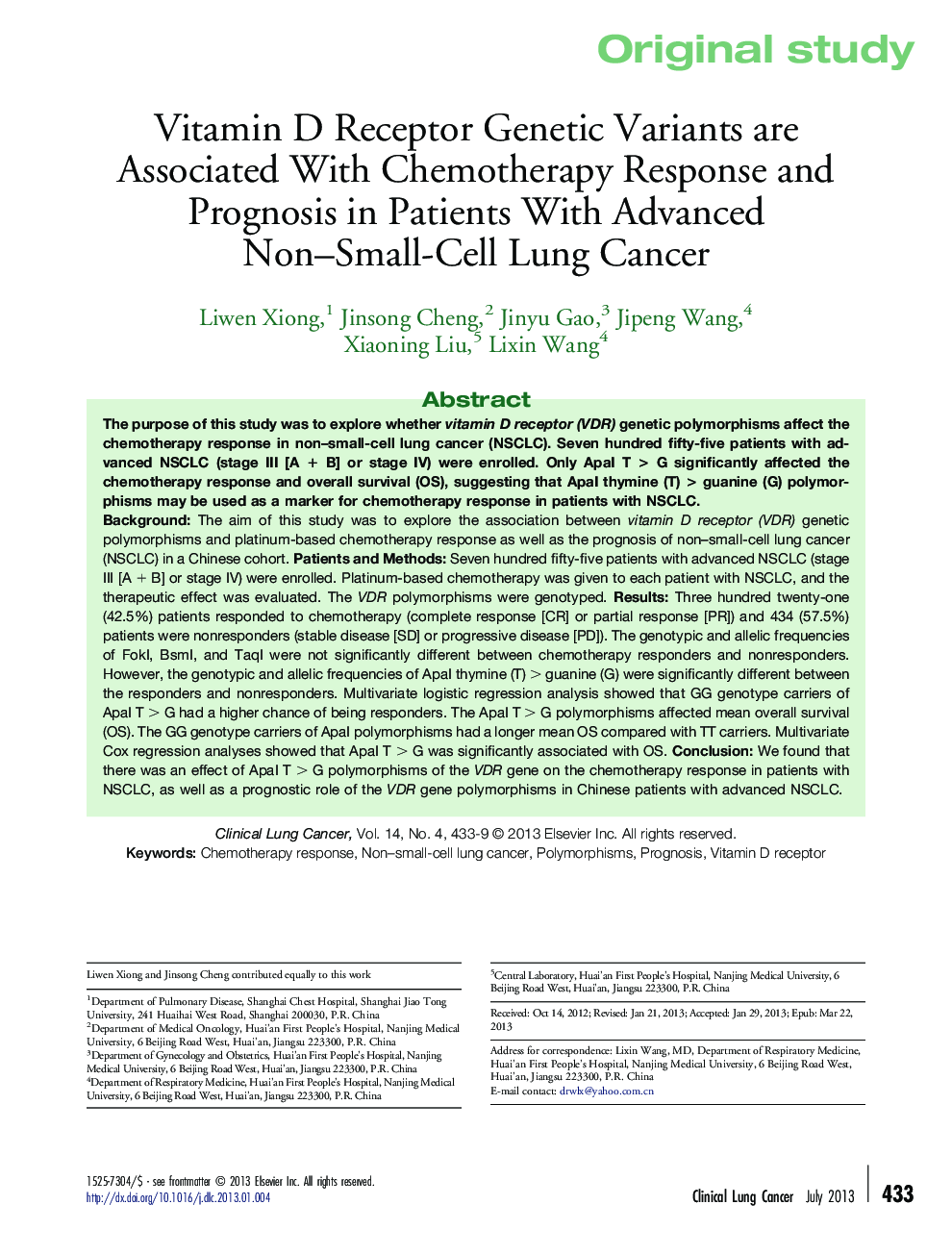| کد مقاله | کد نشریه | سال انتشار | مقاله انگلیسی | نسخه تمام متن |
|---|---|---|---|---|
| 2752764 | 1149589 | 2013 | 7 صفحه PDF | دانلود رایگان |

BackgroundThe aim of this study was to explore the association between vitamin D receptor (VDR) genetic polymorphisms and platinum-based chemotherapy response as well as the prognosis of non–small-cell lung cancer (NSCLC) in a Chinese cohort.Patients and MethodsSeven hundred fifty-five patients with advanced NSCLC (stage III [A + B] or stage IV) were enrolled. Platinum-based chemotherapy was given to each patient with NSCLC, and the therapeutic effect was evaluated. The VDR polymorphisms were genotyped.ResultsThree hundred twenty-one (42.5%) patients responded to chemotherapy (complete response [CR] or partial response [PR]) and 434 (57.5%) patients were nonresponders (stable disease [SD] or progressive disease [PD]). The genotypic and allelic frequencies of FokI, BsmI, and TaqI were not significantly different between chemotherapy responders and nonresponders. However, the genotypic and allelic frequencies of ApaI thymine (T) > guanine (G) were significantly different between the responders and nonresponders. Multivariate logistic regression analysis showed that GG genotype carriers of ApaI T > G had a higher chance of being responders. The ApaI T > G polymorphisms affected mean overall survival (OS). The GG genotype carriers of ApaI polymorphisms had a longer mean OS compared with TT carriers. Multivariate Cox regression analyses showed that ApaI T > G was significantly associated with OS.ConclusionWe found that there was an effect of ApaI T > G polymorphisms of the VDR gene on the chemotherapy response in patients with NSCLC, as well as a prognostic role of the VDR gene polymorphisms in Chinese patients with advanced NSCLC.
Journal: Clinical Lung Cancer - Volume 14, Issue 4, July 2013, Pages 433–439